
A visit to Jingdezhen with Bo Gyllensvärd, in 1992
Friday 18 September 1992
Shopping at the private street "night" market
Today, Jarl is very sick. Bo has hurt his ribs and want to rest until we come to Beijing. Erik keep Jarl company in a chair by the window. Remains, me. I have a few points left on my to do list; Take a look at the Weimin factory again, buying some modern porcelain and, trying to locate the Shibadu, which turned out to be the area on the opposite side of the Chang river, at the floating bridge.
CITS
I went down to the CITS and enquired about our departure Sunday morning at 7:30. Which bus we will travel with, they don't know yet. Handed over a Swedish - China Travel agency brochure together with some business cards from people back home. Looking into how to arrange for transportation of vases purchased at the 'free market' but this is not entirely simple. For public goods the fee is 35% of the invoiced value towards freight and insurance to Sweden. How much this is naturally depend on the invoiced value. As far as I have seen people here are not that very much into invoicing but maybe if you do ordinary trade things are more orderly.
The private street market, daytime at the "night" market
On my way into the city I bought 3 eggshell thin pieces of underglaze blue and white bowls with rice grain pattern. The decoration is different on all three, the theme is fish, birds and people. They are incredibly delicate and weights almost nothing. Still they are underglaze blue and 'rice grain'. If these make it back to Sweden it is a miracle. The starting price was very high but after some negotiations we settled at about a (Chinese) months salary.
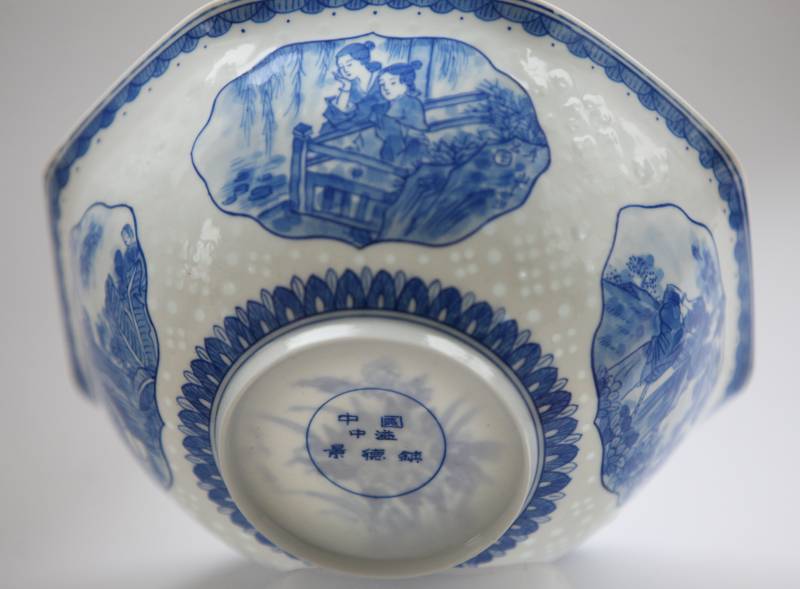
Rice grain underglaze blue eggshell bowl. The decoration is under the glaze on both inside and outside and can bee seen through the walls. The walls are pieced and "rice grain" glaze filled, which is a different process that needs to be done before the walls are thinned out.
Sample bowl bought in Jingdezhen September 1992. Diameter 7 inch (17.5 cm).
Mark: Zhong Guo (China), Zhong Yi (factory name), Jingdezhen.
Clearly they themselves put a high value on these thin bowls. Further down to road at the regular market I bought another 60 small cups of eggshell thin porcelain with enamel decoration, and two vases as samples of the Chinese woman whose painting technique I thought was good.
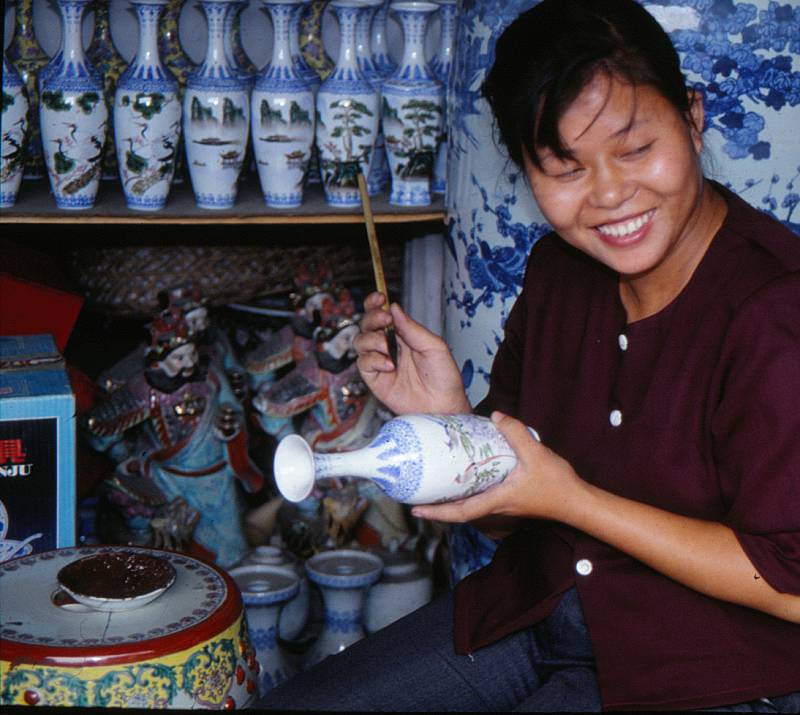
The blue borders was badly printed and came with the vases. Her patterns were a number of standard decorations. I assumed that all vases in this booth was made by her and all intended for the tourist trade. The weight of the vases was only a few grams each and they were so thin they were basically transparent, like opaque light bulb glass.
I also took a photo of the artist at the store while actually working with decorating vases, brush in hand.
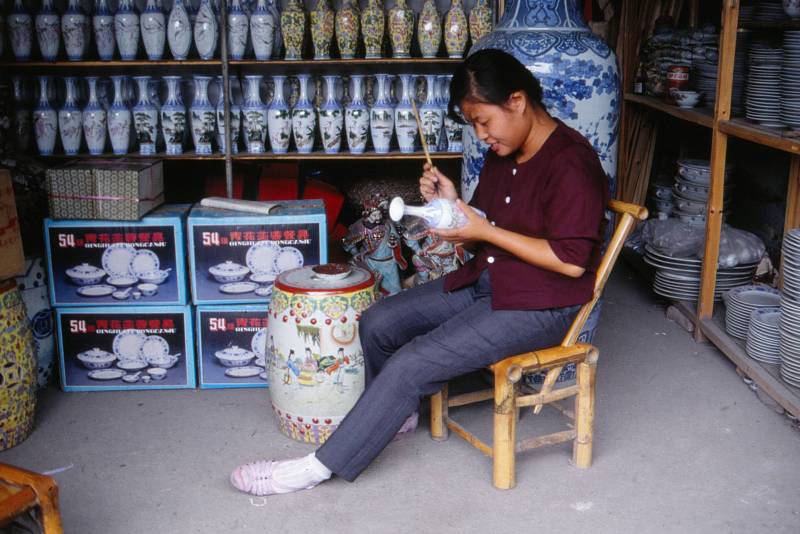
Actually working with decorating vases, brush in hand. To finish one vase was a matter of minutes, at most. The birds and other details in the decoration was accomplished by fluid movements and by applying different pressure with the brush.
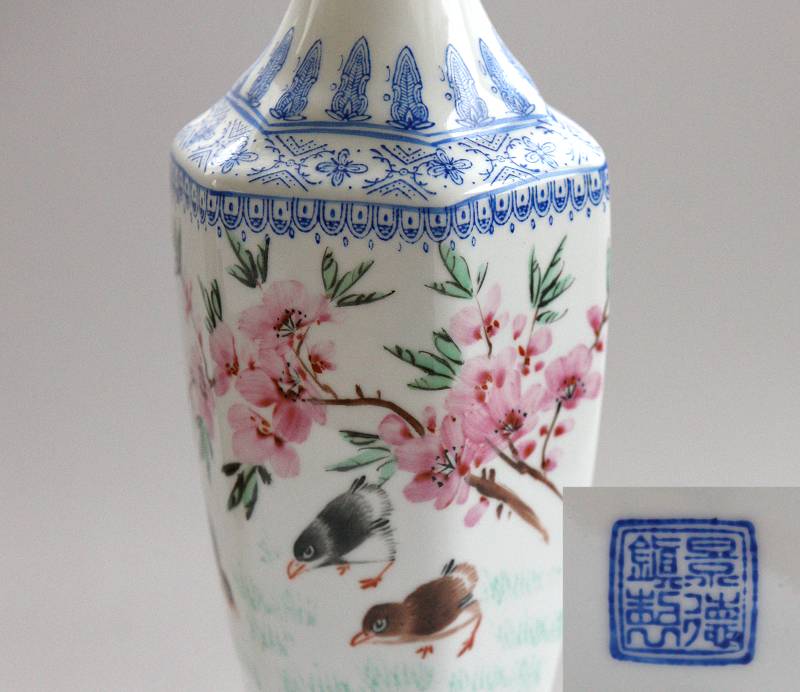
This is a close up of the sample vase I bought. The point is not the simplicity but the tradition, where this vase could be decorated within minutes with a fairly nice standard decoration, borders already there. To me it was a modern expression of a very long tradition I was looking at. The vase is paper thin, see through and weight basically nothing. Mark: Jingdezhen zhi
The body of these pieces are about as thick as lamp bulb glass. They are visibly somewhat elastic if you try to press them across the rim.
Evening at the Hotel, Jarl not feeling well
Now Jarl is so sick that he doesn't even want beer. He has a high fever and are taking penicillin. The afternoon and evening spent in calm and silence. Erik and I are discussing the East Indiaman Götheborg, excavation technique and the future.
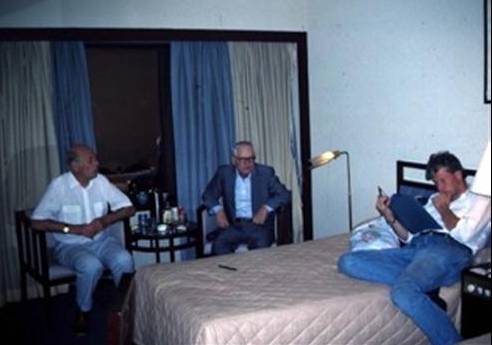
Planning dinner. After a few weeks we had exhausted all possible combinations of the dishes available on the Hotel restaurant menu, and then some. Right now I can't recall why it didn't occur to us to go out and eat. We were the only westerners in Jingdezhen, was one reason, but anyway.
From left to right. Erik Engel, Bo Gyllensvärd and Jan-Erik Nilsson.
Local disco
At the hotel there is now a discotheque with a local artist performing. The admittance is 10 Yuan. The refreshment options are tea or soda, with or without straw. Bo offered whiskey with the coffee after dinner. Wrote and sent some postcards. The stamps you as usual glue yourself with a brush and a glue jar.
Nine meters down to Chenghua
Although we don't know what is truth of wishful thinking depending on how you see it, there it a lot that points towards that it within the city here and there can be deep layers of ceramic waste but as some describe it to say that Jingdezhen rests on a several meters thick layer of porcelain is just not true.
However, under the pavilion on Zhushan there is "9 meters down to Chenghua" they say.
If we study the landscape, it is also possible that the river may once have been in closer or even direct connection with the imperial factory area. On an old map we've seen from Zhushan, the river is drawn much closer, but today it is quite far away. Considering the weight of the raw material it would seem natural with as short distance as possible.
Saturday morning 19 September 1992
Old houses east of Zhushan
When walking towards the free "night" market from the Hotel, looking right, there were an entire area of interesting looking houses, some built with stacks of ruined porcelain and saggars melted together in the foundation. Today was the opportunity to take closer look at the these old buildings around Zhushan.
Since Zhushan is literally a hill (shan) these houses are in the valley on the east side of the Pearl Hill. Any age is very difficult to tell but from the brick walls where old door openings could be found, they look interesting. I don't think the area around this the most prestigious of all places in the history of Chinese porcelain will remain undeveloped for long. And then this will be the first to go.
Took a number of photos in black and white.
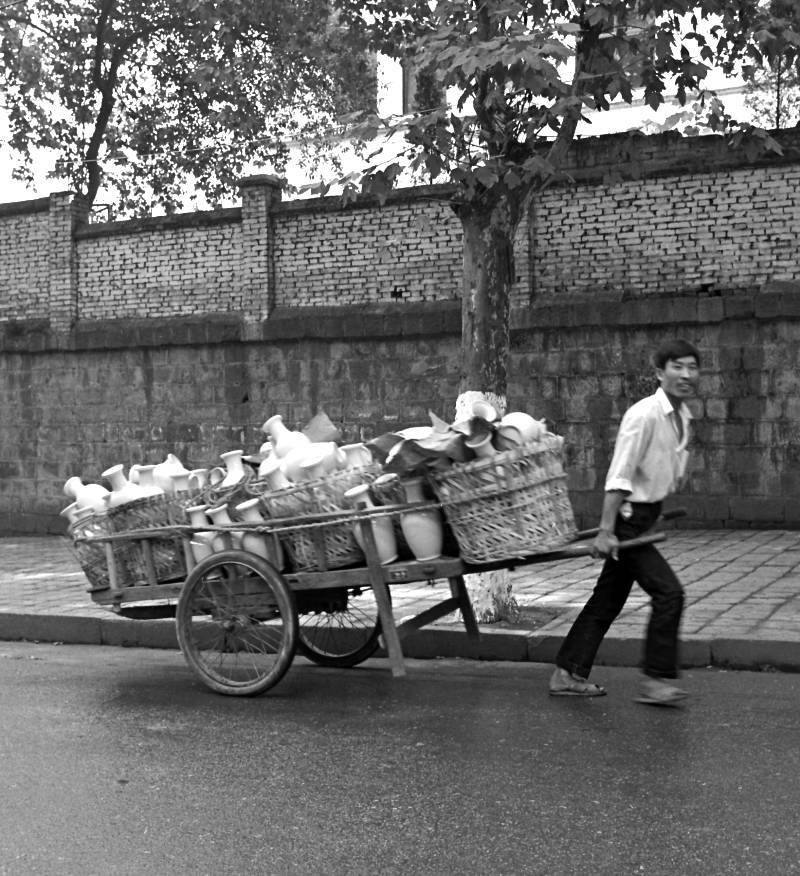
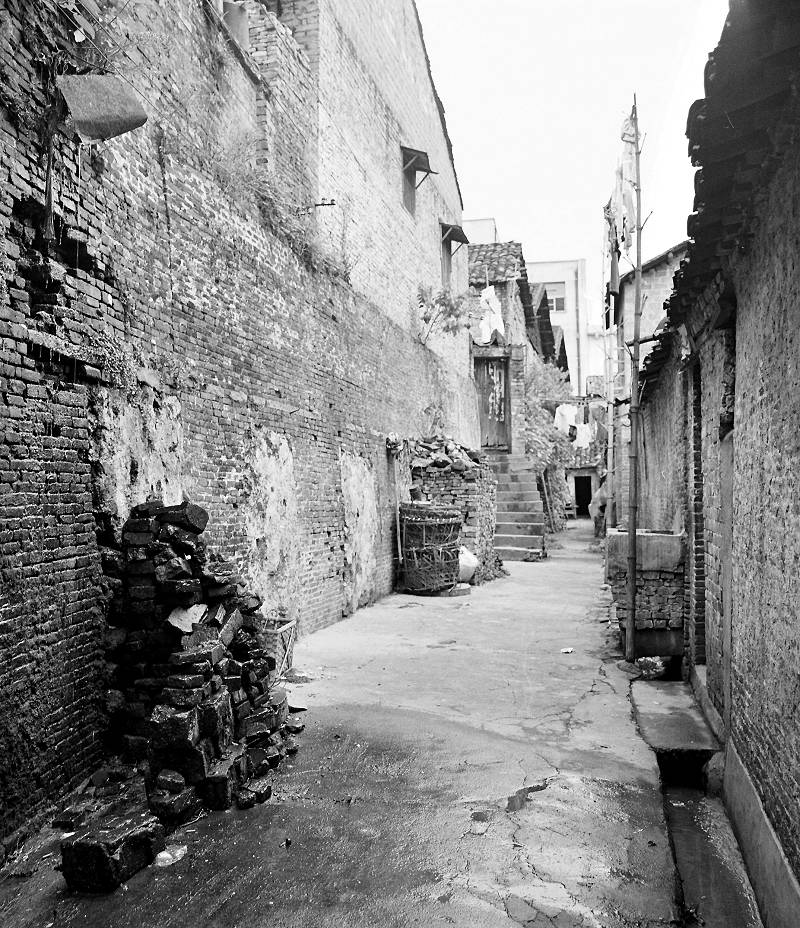
From the old buildings to the east of Zhushan
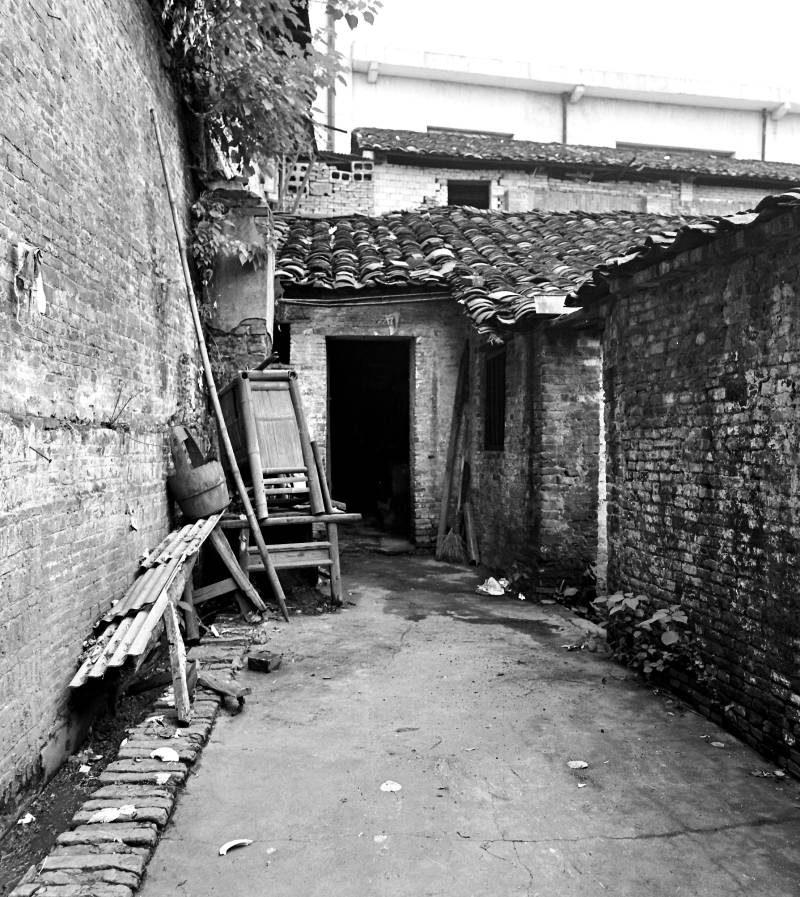
Old houses from a low laying area east of Zhushan

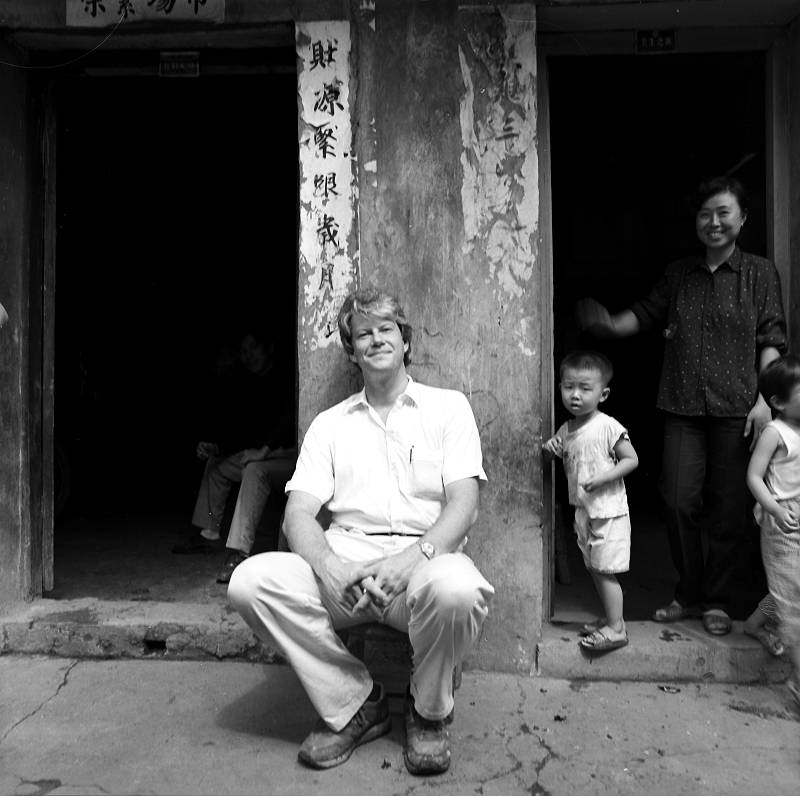
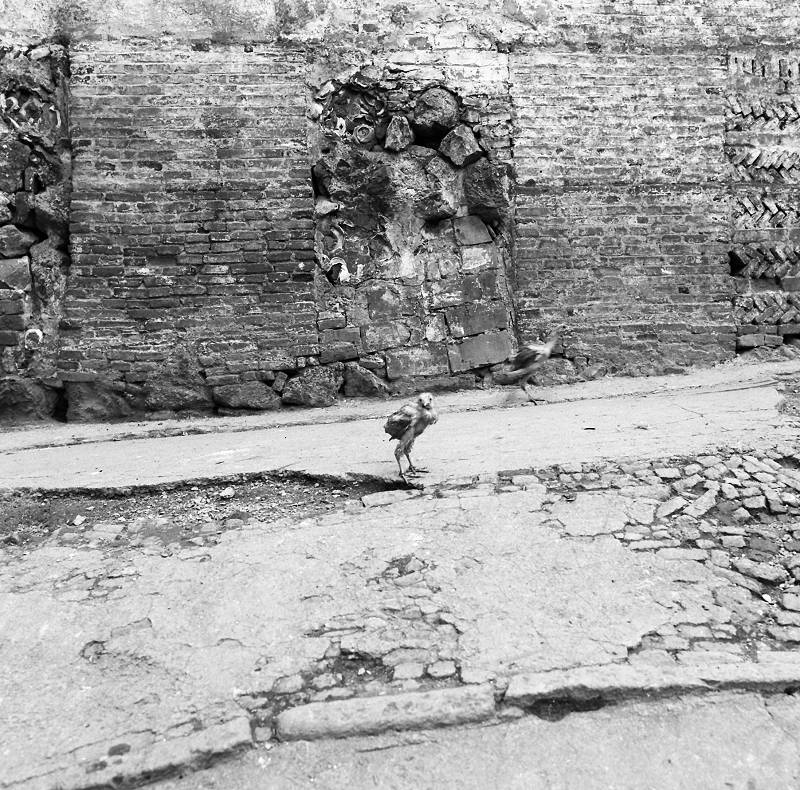
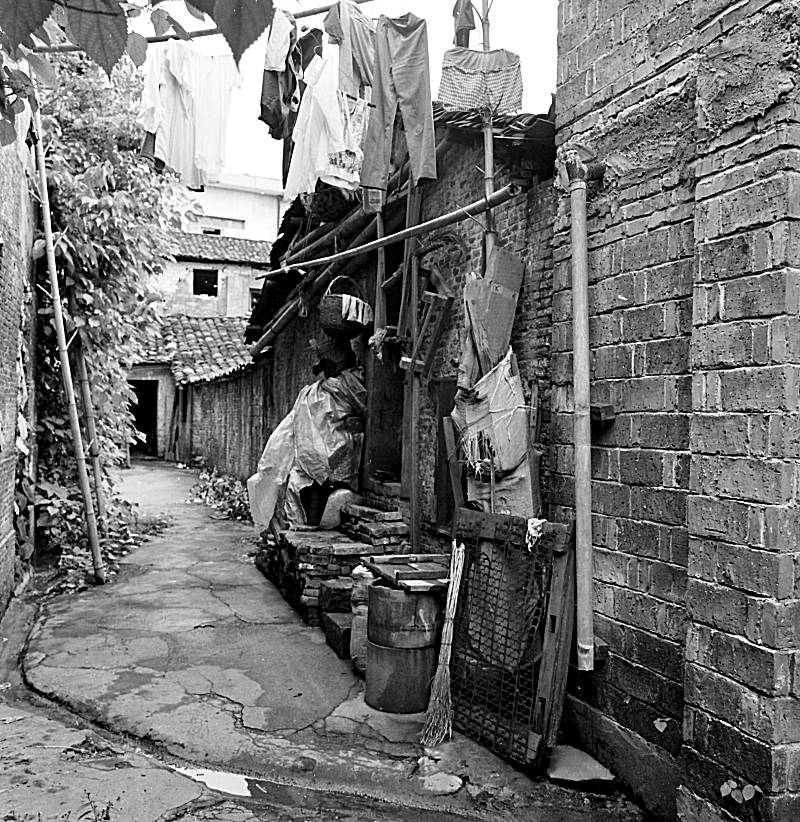
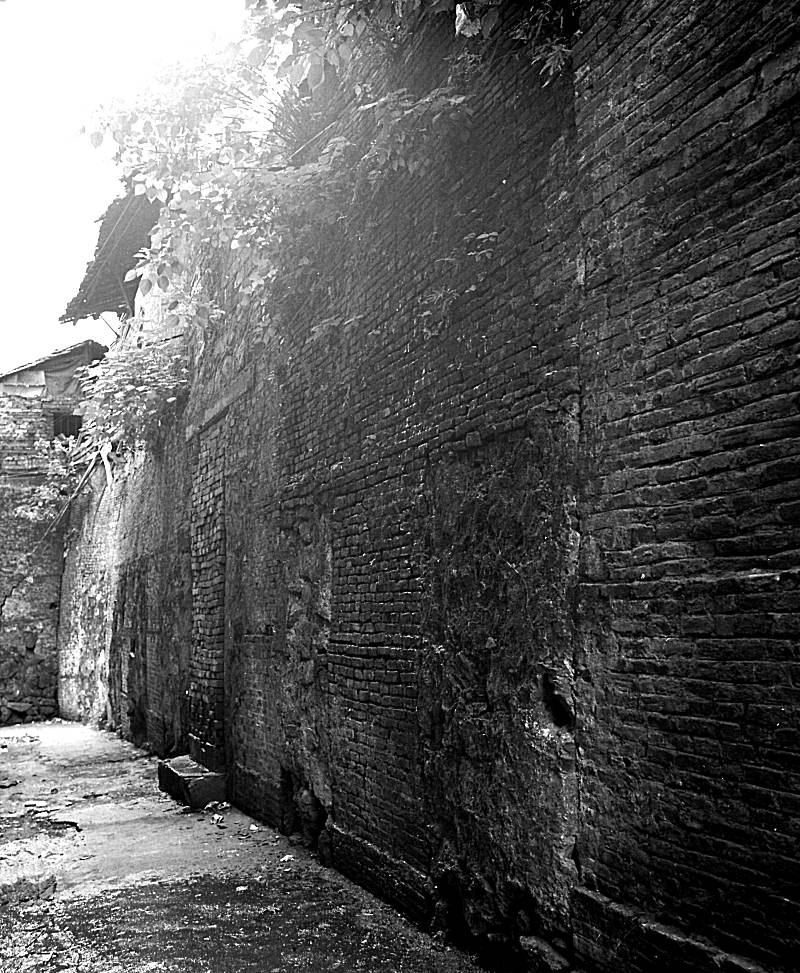

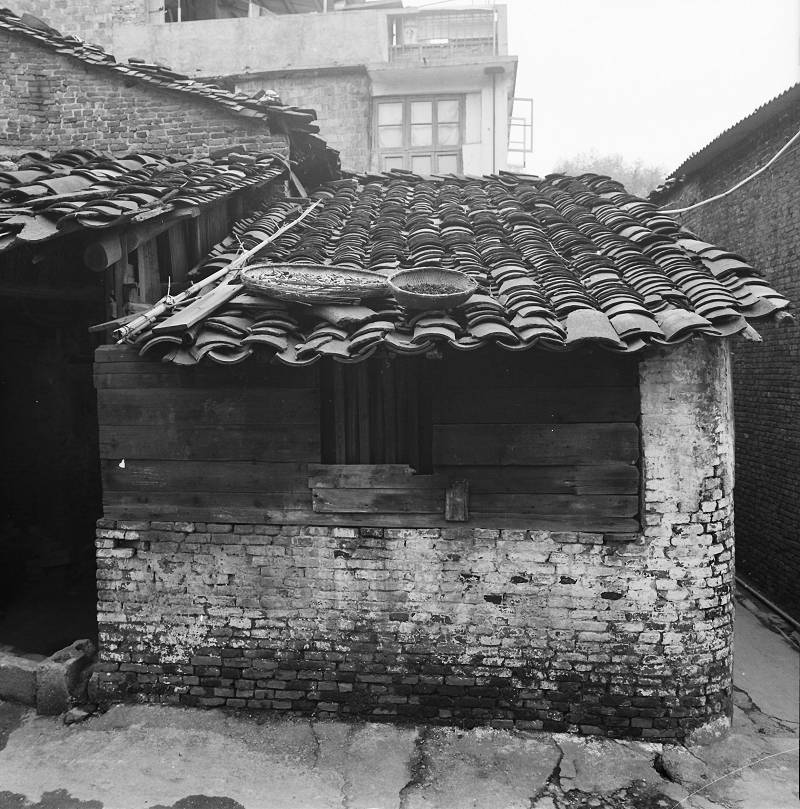
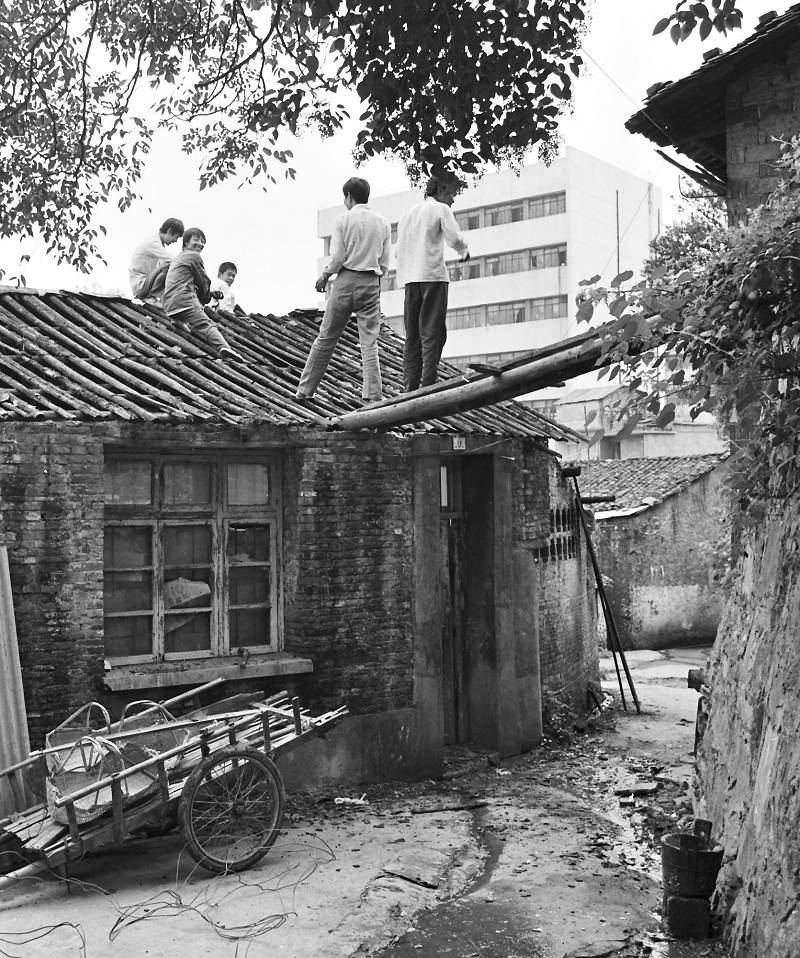
This is my diary as it was written in Jingdezhen and Beijing the 4-24 September 1992,
after an invitation and journey to study the recent findings from the excavations of the Imperial Ming Kilns at Zhushan and other aspects of the ceramic history of China, in and around the city of Jingdezhen. My travel mates beside professor Bo Gyllensvärd were Jarl Vansvik and Erik Engel. My eternal gratitude goes to them, Dr Liu Xinyuan and all our friends at the Archaeological Institute of Jingdezhen. Text and photos on this web page are copyright as published © Jan-Erik Nilsson, Gotheborg.com, Sweden 2014.
















